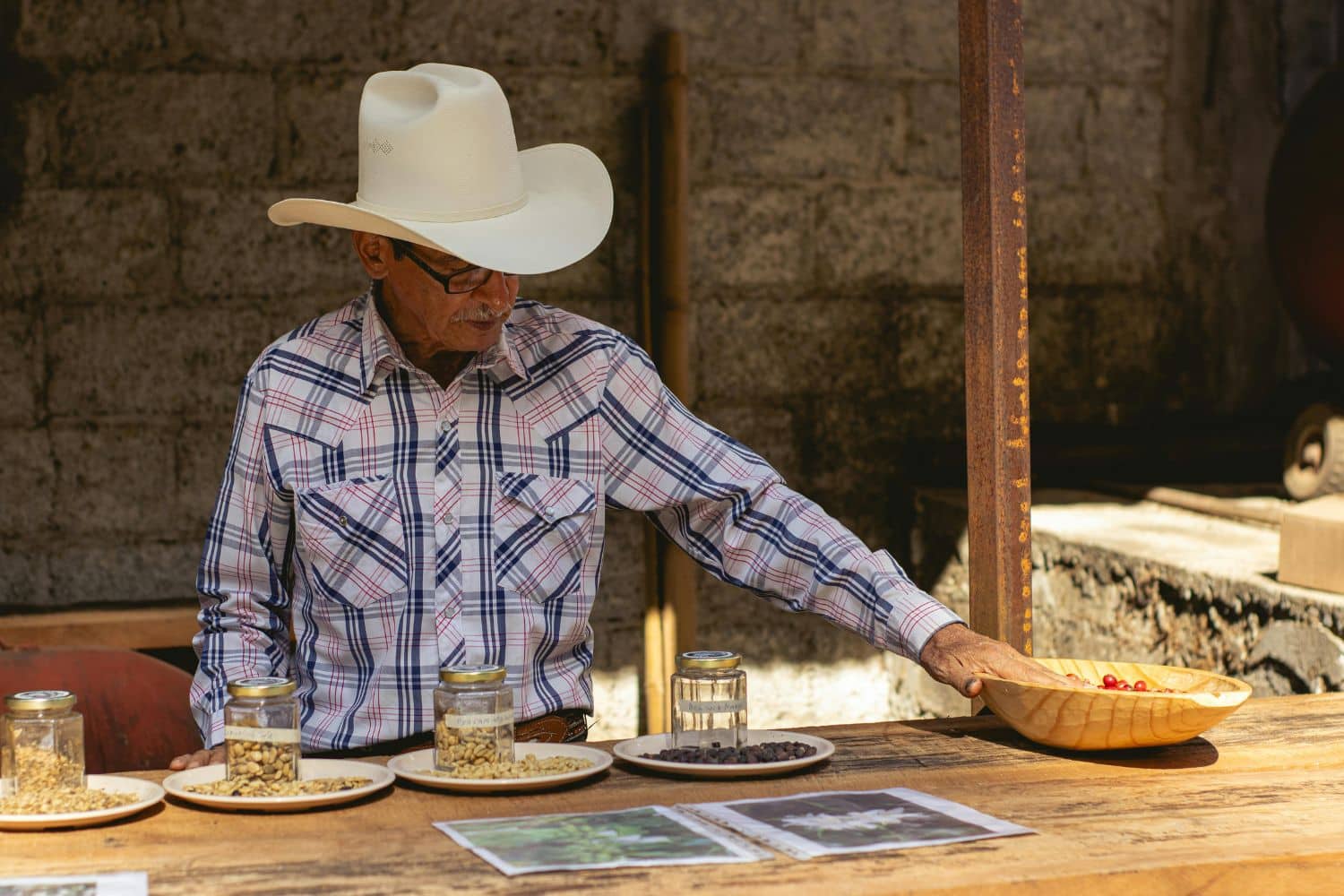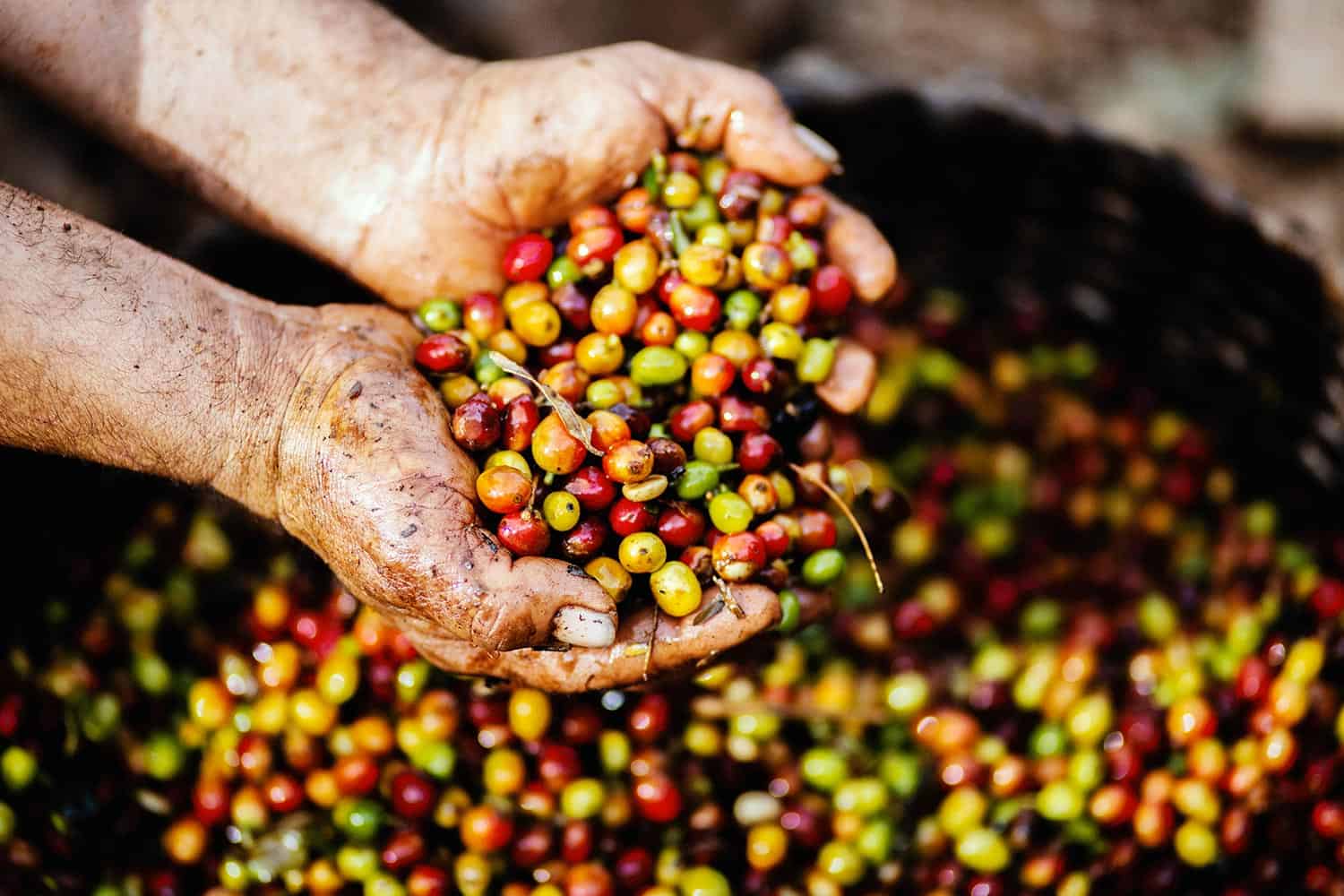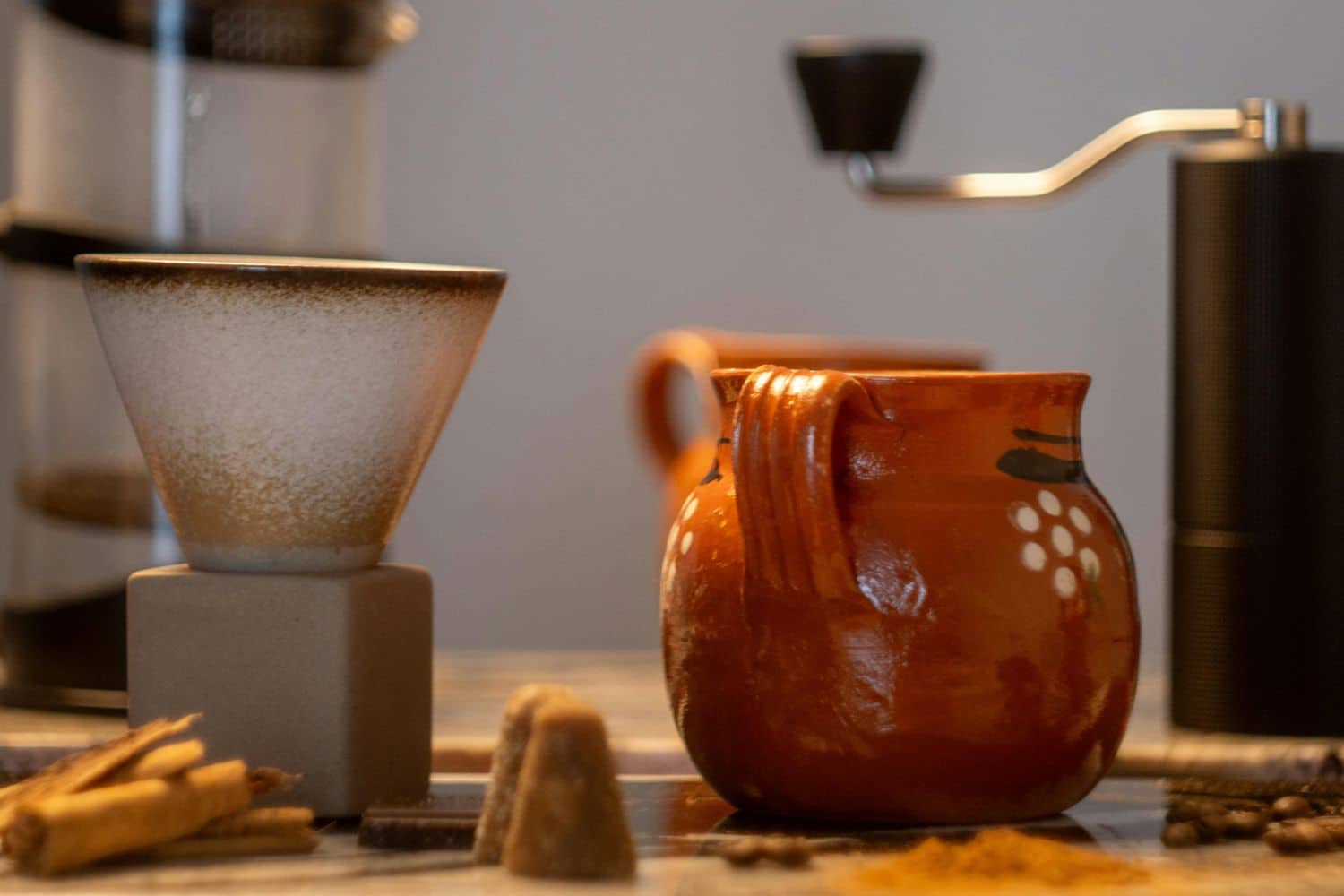Mexico has quietly risen from a bulk supplier of coffee to a specialty producer. Indeed, Mexico coffee – particularly from Veracruz, Chiapas, Oaxaca and Puebla – now captivates palates worldwide, winning competitions and getting scooped up for hundreds of dollars per pound.
So what changed? In essence, there was a generational shift toward quality over quantity. The country finally leveraged its ideal terroir and microclimates, amping up farming, processing and other post-harvest techniques.
Today’s Mexican coffee is all about bright, mellow acidity, nutty complexity and delicious chocolate undertones. How it got here is what I want to explore in this guide.
Table of Contents
A Brief History of Mexico Coffee
As in much of Latin America, coffee arrived in Mexico in the late 18th century, likely brought by the Spanish. The first documented plantings occurred in 1790, centered around Veracruz. Here, the warm, sub-tropical climate and rich soils proved ideal.
By the mid-19th century, coffee farming had spread to neighboring Chiapas and Oaxaca. It proved popular, partly because indigenous and mestizo farmers recognized its economic potential.
For much of the 20th century, the Mexico coffee industry focused on quantity over quality. The Government Coffee Institute (INMECAFÉ) oversaw production, concentrating on coffee destined for blends rather than single-origin niche markets.
With the collapse of the International Coffee Agreement in 1989 (which devastated prices), many farmers abandoned their crops. However, this crisis sparked invention.
In the same year, INMECAFÉ disbanded and production shifted to a cooperative model. The largest of these included and still include UCIRI based in Oaxaca, Majomut and Tzotzilotic Tzobolotic in Chiapas and Mut Vitz, the first Zapatista cooperative focusing on direct coffee exports.
Within these cooperatives, farmers embraced specialty coffee by investing in organic certification, better farming and processing methods and lucrative direct-trade relationships.
The Mexican Coffee Industry Today
Today, Mexico is among the world’s biggest coffee producers, currently ranked eighth worldwide by volume. It produces an impressive 2 percent of the world’s coffee or 3.89 million 60-kg bags as of the 2024/25 season.
But it’s the country’s specialty coffee that has experts sitting up and paying attention. It’s primarily shade-grown, promoting soil health and biodiversity.
Furthermore, 25 percent of all production is certified organic, which is among the highest percentages globally. Notably, indigenous farmers and cooperatives lead this movement, blending traditional agroforestry know-how with cutting-edge post-harvest techniques like anaerobic coffee.
Recent accolades validate these improvements. In fact, Mexico coffee consistently places well in Cup of Excellence competitions.
Earlier this year, a washed Bourbon from La Perla farm and a washed Geisha from Trebolillos farm, both estates in Veracruz, won in their categories. Similarly, a washed Geisha from Finca Santa Cruz in Chiapas scored an impressive 91.36 points in its category.
The secret to this success lies in the cooperative model. Small-scale farmers and estates band together to share knowledge and resources while maintaining their individual identities.
But we can’t overlook Mexico’s geographical diversity; this has a significant part to play, too. From Oaxaca’s bright, wine-like Plumas to Chiapas chocolate-rich beans, each region’s terroir shines through, delivering surprisingly delicious flavor profiles.
What Makes Mexico Coffee Special?
Put simply, Mexico coffee just hits different. Taking into account regional profiles, these beans are generally smooth and chocolatey, with nut, caramel or fruit undertones. They also boast a bright but gentle acidity.
Flavor aside, Mexican coffee’s chops really lie in its organic certification. 25 percent is certified USDA organic, making it one of the cleanest origins on the planet. American importers know this certification is legit, prizing these beans for their zero-pesticide, zero-chemical approach.
It’s worth noting that Mexican farmers have a significant hand to play in this. Their commitment to shade-grown coffee ensures that plants grow slowly under indigenous tree canopies, giving the Arabica beans enough time to develop flavor complexity.
Moreover, most production comes from small farms. As such, producers tend to their trees with care, being careful to minimize the use of harmful chemicals in order to harvest top-notch beans.
Mexican Coffee Growing Regions
So, where does coffee grow in Mexico? Primarily, in the southern highlands, where the climate is mild, rainfall abundant and altitudes favorable. Let’s look at the most notable areas.
Veracruz
Veracruz, Mexico’s oldest growing region, stretches across the Gulf Coast. Farms here lie at an impressive 1,000-1,600 meters above sea level (masl), growing primarily Bourbon, Typica and Mundo Novo varieties.
The humid, sub-tropical microclimate produces beans with a balanced sweetness, gentle acidity and nutty flavors. Thus, this coffee has the distinction of being approachable yet sophisticated.
Notably, because of the long growing history, locals here maintain historical pride through meticulous cultivation and post-harvest processes. Veracruz also has the distinction of kick-starting Mexico’s specialty coffee renaissance in the 1990s.
Chiapas
Mexico’s coffee powerhouse, Chiapas, accounts for 40 percent of total production. At 800-1,700 masl, it straddles the Guatemala border, boasting the ideal terroir for Bourbon, Typica and Caturra varieties.
This elevation, along with the rich soil and abundant rainfall, produces full-bodied beans with a chocolatey sweetness and gentle acidity. The Sosonusco region in particular, stands out for its balanced beans with bright and clean finishes.
But there’s a lot more that makes Chiapas coffee special. At the top of the list is the strong cooperative culture, and Fair Trade and organic initiatives nurtured by the indigenous Mayan communities. This, in my humble opinion, is at the core of Chiapas’ coffee success.
Oaxaca
If Chiapas is the workhorse of Mexico coffee, Oaxaca is the artisan. Coffee here grows in the Sierra Madre Mountains at dizzying heights of 1,200-1,700 masl.
Farms in Pluma Hidalgo, the region’s crown jewel, cultivate mostly Typica and Bourbon varieties. These beans yield bright, citrusy cups with floral aromatics and a light body unlike anywhere else in the country.
Another reason why beans here stand out from other regions is the unique microclimate, which constantly sees Pacific breezes and mountain fog hit coffee trees. Not to forget, the soil, that’s full of volcanic, mineral-rich goodness. All this works to create incredibly complex cups that dominate Cup of Excellence competitions year on year.
Like Oaxacan cuisine, Oaxaca coffee stands out for its traditional approach. Almost all farms are small and family-owned, and run using traditional, sustainable, organic methods. In fact I’d go as far as to say that these beans are the very definition of terroir-driven coffee.
Puebla
The underdog of Mexican coffee, Puebla grows beans at impressive altitudes of 1,200-1,800 masl. The weather is mild and the soils rich thanks to the volcanic peaks that dot the region.
Popular varieties include the usual suspects Bourbon and Typica, as well as experimental plantations of Geisha. As such, these beans boast a crisp acidity, clean, citrus notes and a lighter body, much like Panama coffee.
In recent years, younger growers are experimenting with novel coffee processing techniques like honey and natural fermentation, pushing the boundaries of coffee processing while honoring tradition. As such, Puebla is now Mexico’s coffee lab, and the results are, as expected, delicious!
Other Regions
Although the above-mentioned regions dominate coffee production, they’re not the only ones.
Other notable growing regions include:
San Luis Potosi: Clean, sweet profiles with apple and honey notes. With limited production, this is one of Mexico’s best-kept secrets among specialty coffee hunters.
Nayarit: Mellow, sweet coastal coffees with soft acidity and tropical fruit undertones. The humid Pacific climate creates distinctively smooth, easy-drinking cups.
Colima: Rich, full-bodied beans with deep chocolate notes and low acidity. One of Mexico’s smallest coffee regions, nestled near active volcanoes.
Guerrero: Indigenous-grown beans with robust body and herbal notes. The rugged mountain terrain yields bold, earthy coffee with rustic character.
While these regions produce smaller volumes than the “Big Four,” they collectively showcase the country’s incredible coffee diversity. Importantly, they also expand the country’s specialty coffee offerings, enhancing Mexico’s reputation as a multifaceted origin worth exploring.
What Does Mexico Coffee Taste Like?
In a word, exquisite. Mexican coffees deliver beautifully balanced and approachable, yet complex cups. These qualities make them perfect for both newcomers and seasoned enthusiasts.
Like other Central American coffee, you can expect smooth and satisfying brews with a medium body. On drinking, this coffee will gently coat your palate, creating a pleasant, rounded and silky mouthfeel.
Unlike East African coffees, the acidity is bright and lively without being harsh, and often described as “crisp” or “clean.”
Generally, this coffee’s profile boasts dark cocoa and milk chocolate notes as the foundation. Nutty undertones, caramel sweetness, subtle hints of spice and sometimes delicate fruit notes ranging from citrus to stone fruit complement this foundation.
But it’s through its varying flavor profiles that Mexican coffee truly shines. Chiapas coffee delivers rich, chocolatey depth, while Oaxacan beans bring wine-like complexity and floral aromatics. Veracruz beans offer balanced, nutty sweetness, and Puebla coffee surprises with bright citrus and experimental profiles.
The beauty of these beans is that they’re versatile enough for your everyday morning brew yet distinctive enough to stand out in cupping sessions. This is what makes Mexico unique among lesser-known origins.
How to Buy Mexican Coffee Beans
Before I look at how to buy Mexico coffee, I should start with when to buy. Harvests run from November through March, with beans typically reaching roasters by late winter or spring. For peak freshness, I suggest buying between February and June when newly harvested beans hit the market.
That said, properly stored green coffee maintains its quality for months, so don’t stress too much. Just remember to check the roast date (not the “best by” date) and aim for beans roasted within the past 2-4 weeks.
As for where to buy, if you can help it, skip the supermarket shelves and opt for the following places instead:
Specialty roasters: They often source directly from farmers or cooperatives and almost always provide origin details.
Direct-trade coffee websites: Connect you straight to the source, dealing with either individual estates or Mexican cooperatives.
Farmers markets: Here, you’ll find craft roasters passionate about sourcing and roasting their beans.
Online monthly subscription services: Specialize in single-origin beans and offer variety from region to region or country to country.
As you source, look for roasters who transparently share farm/producer names and tasting notes. This kind of transparency means they care about quality from farm to cup.
Also, check the label for:
USDA Organic or Fair Trade certifications
Specific growing regions (Chiapas, Oaxaca, Veracruz, Puebla, etc.)
Coffee varietals (Bourbon, Typica, Caturra, Mundo Novo, etc.)
Altitude (the higher the altitude, the better the flavor complexity)
Processing method (washed, natural, honey)
Roast date
How to Brew Mexico Coffee
In the land of the Maya and the Aztecs (who gave us the precursor to drinking chocolate), coffee is brewed and also celebrated.
Cafe de olla, the traditional method, uses a clay pot (olla) to simmer coarse-ground beans with cinnamon and pilloncillo (unrefined cane sugar). The clay imparts an earthy minerality to the brew and the spices elevate its aroma. At home, you can replicate cafe de olla by simmering your grounds in a pot on the stovetop.
Failing that, I recommend the following modern brewing methods:
Espresso: Pueblan and Oaxacan beans pull delicious shots with a caramel sweetness and bright acidity.
Pour-over: This method highlights the coffee’s brightness and clarity. Use a medium grind, 200-degree-Fahrenheit (93-degree-Celsius) water, a 1:16 coffee-to-water ratio and 4-minute total brew time.
Automatic drip: Mexican coffees excel here. The balanced flavor profile means you’ll get consistently delicious and approachable every-day-drinking cups.
French press: Perfect for highlighting body, especially with chocolatey Chiapas beans. Use a coarse grind and 4-minute steep time.
Final Thoughts
From humble 18th-century beginnings to a modern day specialty coffee renaissance, Mexico coffee has proven that quality, tradition, innovation and sustainability can coexist beautifully. Whether it’s with chocolatey beans from Chiapas or wine-like, floral beans from Oaxaca, this coffee is making a name for itself worldwide.
And the secret to its success? Combining centuries of tradition with cutting-edge coffee processing, bringing forth exquisite single origins to excite the taste buds.
The fact that over 25 percent of Mexican coffee is certified organic makes things even better. This also shows that the Mexican coffee industry isn’t all about hype and marketing. Rather, it holds high its commitment to coffee that respects both the land and the people.
So, the next time you’re shopping for beans from a unique origin, look south of the border. Mexico’s coffee industry is currently firing on all cylinders and honestly, your mornings deserve this upgrade!
What are your favorite Mexican coffee beans? Have you got questions about sourcing? Drop a comment below; I’d love to hear all about your experiences and answer any questions you may have!
Mexico Coffee FAQ
Mexico is famous for smooth, balanced coffee with a medium body, bright yet gentle acidity and chocolate-caramel-nut flavors. Mexico is also a top organic and shade-grown coffee producer.
Mexican coffee refers to Arabica beans grown in the southern, high-altitude regions of, among others, Chiapas, Oaxaca, Puebla and Vera Cruz.
Mexican coffee has an exceptionally high organic certification rate and unique flavor profile variety. It also boasts strong shade-grown credentials and sustainable, indigenous people-led production.
Mexico’s best coffee comes from the Chiapas region, known for its high altitude, abundant rainfall and rich, volcanic soils. Here, coffee has a light to medium body, bright yet gentle acidity and delicious chocolate, floral or fruit undertones.










